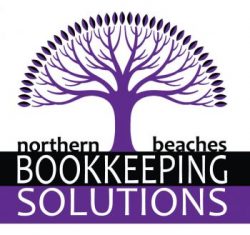Jul
1
Single Touch Payroll (STP) finalisation is now mandatory for all Australian businesses, effectively replacing traditional payment summaries. If you’re unsure how to complete the STP finalisation process or need assistance with payroll reporting, here’s what you need to know to stay compliant and avoid ATO penalties.
What Is STP Finalisation?
STP finalisation is the process of confirming that all payroll data for the financial year has been accurately reported to the ATO via Single Touch Payroll. Once it is completed, employees can access their income statements via MyGov instead of receiving traditional payment summaries or group certificates.
Why Are Payment Summaries No Longer Required?
With the introduction of STP, payment summaries (or group certificates) are no longer required. Instead, employee income, tax, and superannuation details are reported to the ATO every pay cycle through STP-enabled payroll software. At the end of the financial year, employers must complete the STP finalisation process to finalise all reported income data.
How to Complete STP Finalisation
To finalise STP reporting for the financial year, follow these steps:
- 1. Review Payroll Data: Verify that all payroll data, including wages, tax withheld, and superannuation contributions, have been accurately reported.
- 2. Update Employee Records: Ensure employee details (e.g., TFN, pay rates) are accurate and up to date in the payroll system.
- 3. Access STP Reporting: Open your payroll software and navigate to the STP reporting section.
- 4. Mark as Final: Locate the “Mark as Final” or “Finalise” option to confirm that the payroll data for each employee is complete and accurate for the financial year.
- 5. Lodge the STP Finalisation Report: Submit the report to the ATO through your payroll software. The ATO will update employee income statements in MyGov accordingly.
Important Deadlines for STP Finalisation
The deadline is 14 July for most businesses. This gives employers time to verify and correct payroll data before the ATO updates employee income statements. If you miss the deadline, notify the ATO to avoid potential penalties and interest charges.
What If You Discover Errors After Finalisation?
If you identify an error after lodging the STP finalisation report, you can submit an amended report to correct the data. The ATO recommends making corrections as soon as possible to ensure employees receive accurate income statements for tax return purposes.
Benefits of STP Finalisation
- Streamlined Reporting: Simplifies payroll reporting by eliminating the need for separate payment summaries.
- ATO Compliance: Ensures accurate and up-to-date reporting of wages, tax, and superannuation.
- Employee Transparency: Employees can access their income statements directly through MyGov.
- Reduced Paperwork: Minimises paperwork and manual data entry, reducing the risk of errors.
Common STP Finalisation Mistakes to Avoid
- Failing to mark STP reports as “Final” for each employee
- Incorrect employee details, such as TFNs or pay rates
- Omitting bonuses, termination payments, or overtime from the report
- Missing the 14 July deadline and incurring ATO penalties
Need Help With STP Finalisation?
It can be complex, especially if there are multiple employees or missed pay runs. Northern Beaches Bookkeeping Solutions offers comprehensive payroll services, including STP reporting and finalisation. Contact us today to ensure your STP reports are accurate, compliant, and lodged on time.

